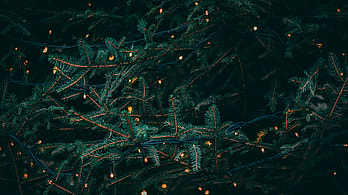
Jewelry has changed styles and materials over the centuries, using both precious and non-precious materials to adorn the bodies of both men and women. Whether it’s real diamonds or nickel, jewelry has defined both outfits and people no matter what the material. If you have some pieces of 1920s jewelry in your closet still, check out the history and value behind them here.
RELATED: What Is the Most Expensive Gemstone?
The Change to 1920s Jewelry

Before the 1920s, the main eras for jewelry included the Victorian and Edwardian, where society balls and class divisions imposed the need for pricey jewelry, most loaded with precious stones or metals. This all changed in the 1920s when the post-war pinch caused several families to take their family heirloom jewelry and either consign it to the bank vault or sell it.
Instead of wearing family heirlooms, society turned to semi-precious stones and even fake plastics to adorn their bodies. The new materials opened new gates for 1920s jewelry, as it could be produced cheaply. Designers began making increasingly exuberant and extravagant styles that would have been staggeringly expensive using real jewels.
Instead of family pieces, women bought their own jewels to accessorize with, enhancing the already bold fashions of the time. It also allowed women to find their own style, instead of being constricted to their family heirlooms, forever changing both the fashion and jewelry industries.
Featured Jewelry in the 1920s
Some of the most popular pieces of jewelry in the 1920s include pearl necklaces, dog collars, drop earrings, flirty bracelets, and headpieces (headbands, clips). The best type of 1920s jewelry was angular jewels and elaborate designs, to show off both the accessory and the owner.
CHECK OUT: 8 Most Expensive Dresses Ever Made, Now Archived
1920s Jewelry Materials Value Now

There are several types of materials that were used in 1920s jewelry, both precious and semi-precious. These are just a few examples, comparing their value from the 1920s to today.
Pearls
Natural pearls were extremely expensive in the 1920s, leaving very few women with real strands. In 1917, jeweler Pierre Cartier paid for his company’s New York headquarters with a two-strand natural pearl necklace worth $1 million.
When designers figured out a way to make cultured and even “fake” pearls, the door opened for all women to get their own strands, often at staggeringly long lengths. Today, wild pearls are still worth a good amount of money, but it depends on their size, shape, color, and luster. On average, a single pearl is valued between $300 and $1500.
Diamonds
Diamonds became a huge statement in 1920s jewelry, especially for dinner events. More discoveries of diamond deposits and mass production cutting techniques continued to rack up the price, leaving a one-carat “blue-white perfect” diamond at $500 per carat in the mid-to-late 1920s.
Today, similar to pearls, the value of a diamond varies based on its carat weight, color grade, and clarity grade. The most prevalent factor is the carat weight, which weighs 200 milligrams. For example, a one-carat diamond could cost between $2,000 and $16,000, depending on its quality.
Turquoise
In the 1920s, turquoise was seen as one of many semi-precious stones used in jewelry, oftentimes in those reflecting Native American or African heritages. While the price wasn’t crazy, they still sold for several hundred dollars.
Today, turquoise pulls in a higher price, with per-carat prices ranging from $0.05 to $500. The highest quality turquoise (clear in color, low porosity, no matrix) can easily cost between $1,500 and $25,000 per gram. Where it is mined can also increase the price, as natural stones are valued over treated ones.
ALSO READ: 8 Rare Sea Glass You’d Be Lucky to Find
Onyx
Even though onyx is one of the least expensive precious stones on this list, it still is valued quite high. In the 1920s, onyx was used as statement pieces due to its rich black coloring and could earn around a hundred dollars.
Today, the price of a black onyx ring can vary depending on several factors, but the most affordable options start at $190. Black onyx is a rare variety of chalcedony, a type of quartz, and is most recognizable for its opaque color.
Impact of the Art Deco Movement

While 1920s jewelry, also known as the Art Deco movement, allowed for affordable jewelry, it also forever changed jewelry consumption, collection, and adulation. Women embraced the freedom of chosen adornment as a statement rather than status, which allowed them to pursue their unique style. Along with accessible jewelry, women were freed from the corset and heavy garments, allowing them to move however they desired.
We can still see the impact of the Art Deco movement today with both semi-precious and precious jewelry available to purchase in varying states of detail.
CHECK OUT: 11 Most Wanted Rare Antique Glass Collectors Are Looking For
While jewelry today might not be that expensive, there were times when the only jewelry available was the ones passed down from generation to generation. 1920s jewelry changed not only the idea of wearing non-precious stones but also how elaborate the designs could become.


